Lecturers of Workshop on Surface/adsorbed oxygen on metal oxides; role in gas sensing and catalysis
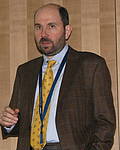
Nicolae Barsan received in 1982 his diploma in Physics from the Faculty of Physics of the Bucharest University and in 1993 his PhD in Solid State Physics from the Institute of Atomic Physics, Bucharest, Romania. Between 1984 and 1995 he was a physicist, researcher and senior researcher at the National Institute of Materials Physics, Bucharest. In 2005 he was granted the Research Professor title by the Romanian Ministry of Education and Research. Since 1995 he is a senior researcher at the Institute of Physical Chemistry of the University of Tübingen where, currently, is leading together with Udo Weimar the Gas Sensor research group. He presented 13 invited lectures at international conferences and published more than 150 papers and contributions to international conferences as well as 4 book chapters and 7 patents. In 2001 he co-founded the Advanced Sensing Devices (ASD) company with the intention to bring his developments in the field of metal oxide gas sensors to the market. ASD merged with Applied Sensors in 2003 and established itself as a leading European company in the field of gas sensor technology and application developments. During his involvement with ASD and Applied Sensors, from May 2001 to December 2006, he was involved in the development and industrialization of micro gas sensors and in their application in the automotive field.
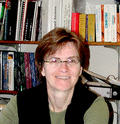
Ulrike Diebold is Professor of Physics and holds the Yahoo! Founder Chair in Science and Engineering at Tulane University in New Orleans, U.S.A. She received her PhD in Physics from the University of Technology in Vienna, Austria in 1990. After a post-doctoral appointment at Rutgers, The State University of New Jersey, she joined the faculty at Tulane in 1993. Her research interest is surface science, with a special emphasis on semiconducting metal oxides. She is using scanning tunneling microscopy in combination with spectroscopic tools to study the geometric and electronic (defect) structure of single-crystalline and nanoscale metal oxide materials, the adsorption of molecules, and their modification with metal nanoclusters and dopants.
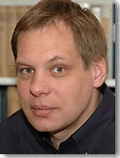
Oliver Diwald studied Chemistry at the University of Vienna, Austria. He received his Ph.D. at the Vienna University of Technology (TU Wien) in 2000. Between 2001 and 2003 he worked as a postdoctoral fellow with John T. Yates Jr. at the Surface Science Center / University of Pittsburgh where he carried out photochemistry studies on TiO2 single crystal surfaces. After his return to Vienna (TU Wien) he finished his habilitation in physical chemistry in 2006. His research interests range from the synthesis, characterization and functionalization of oxide nanostructures to in-depth chemistry and photochemistry studies on such systems. (see also http://www.imc.tuwien.ac.at/staff/pcod_group_d.php).
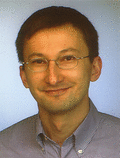
Aleksander Gurlo obtained a PhD in chemistry from the Belarusian State University (Minsk, Belarus) in 1998, and then worked there as an Assistant and then a Lecturer for the Chair of Inorganic Chemistry. In 2001 he joined the Institute of Physical and Theoretical Chemistry at the University of Tübingen (Germany), and in 2006 he moved to the Fachbereich Material- und Geowissenschaften of the Technische Universitaet Darmstadt (Germany). He is now finishing his habilitation in the field of synthesis, gas sensing properties, and spectroscopic characterization of nanoscaled metal oxides.
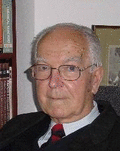
Jerzy Haber was born in Krakow. He graduated from the Jagiellonian University in Krakow and received his PhD and DSc degrees from the AGH University of Science and Technology in Krakow.. He spent his post-doctorate fellowship in Imperial College of Science and Technology in London and University of Bristol. Then, he was nominated to the chair of physical chemistry of solids at the AGH University of Science and Technology. In 1968 he founded the Institute of Catalysis and Surface Chemistry of the Polish Academy of Sciences in Krakow and served as its director until 2002. He received the doctorates honoris causa from the Université Pierre et Marie Curie in Paris and Maria Curie Sklodowska University in Lublin. He is a member of the Polish Academy of Sciences, Polish Academy of Arts and Sciences, National Academy of Sciences of Ukraine and Academia Europaea where he served as chairman of the Section of Chemical Sciences. He was president of the International Council of Catalysis and president of the International Committee of Reactivity of Solids. He was recipient of the Alwin Mittasch Medal of DECHEMA, Zawidzki Medal of the Polish Chemical Society and Pierre et Maria Curie Award of the French Chemical Society.
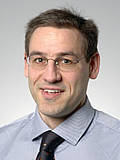
Bjørk Hammer received his PhD in Solid State Physics from the Technical
University of Denmark (DTU) in 1993. After that he was an Alexander von Humboldt fellow at the Fritz-Haber-Institute, Max-Planck-Gesellschaft in Berlin, a post doc at University of Illinois at Urbana-Champaign, and at DTU in Lyngby near Copenhagen. In 1997, Hammer was appointed associate professor at Aalborg University until he took up a similar position at University of Aarhus in 2000. Hammer has worked with quantum mechanical modelling (density functional theory) of the physical chemistry of gas/solid surface interactions. A milestone in his research has been the formulation of the Hammer-Nørskov
d-band model, that explains the trends in the chemical bonds between atoms or molecules and metallic surfaces. Hammer has further made research contribution in the fields of chemical activity of supported nanoparticles, activity of oxide surfaces, molecular self-assembly on metal surfaces and chiral reactions on surfaces.
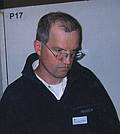
Herbert Over is since 22. Dec. 2001 appointed as C3 professor for physical chemistry at the Justus Liebig University. The habilitation he made in Surface Chemistry, Fritz Haber Institut (in Prof. G. Ertl’s group), 1996. His interest is focused on an atomistic understanding of mechanisms that control the reactivity at transition metal surfaces and the corresponding oxide surfaces, and how the reactivity is related to the actual surface structure and its electronic properties. Over the past three years his group investigated in details the oxidation of Ru(0001) which results in the formation of an ultra thin RuO2(110) film. This RuO2(110) film is catalytically very active and serves as a promising oxidation catalyst in the partial dehydrogenation of hydro-carbons and other simple oxidation reactions.
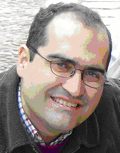
Jaime Oviedo López received a MS degree in Physical Sciences in 1992 and PhD degree in Chemical Sciences in 1998 from the University of Seville, Spain. From 1998-2002 he visited as a postdoctoral fellow the Università degli Studi di Bologna (Italy), the University College London (UK) and the Nanoscale Physics Research Laboratory in Birmingham (UK). He is currently associate professor at the Physical Chemistry Dpt. of the University of Seville. His research interests include theoretical first principles calculations on metal oxides such as SnO2 and TiO2 specially in the field of catalysis, gas sensors and solar cells

Philippe Sautet is born in 1961, has studied at “Ecole Polytechnique” in Paris and defended his doctorate in Theoretical Chemistry at Orsay University (Paris XI) in 1989. He then entered CNRS at the Institute of Research on Catalysis in Lyon, where he developed and lead a group devoted to the applications of theoretical chemistry to heterogeneous catalysis. He is now director of the “Laboratory of Chemistry” at the Ecole Normale Supérieure of Lyon and at CNRS, and director of the “Institut de Chimie de Lyon”. He has published over 170 scientific papers and he received the Silver Medal of CNRS in 2007.
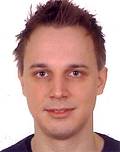
Tilman Sauerwald received his diploma in physics at the University of Giessen in 2003. Subsequently he was working on the influence of surface reaction to the multi-signal generation of metal oxide sensors at the University of Giessen receiving his PhD in 2007. Currently he is working as a researcher/lecturer at the department of physics at the University of Giessen. His scientific interests are in the development of gas sensing materials and the techniques of (non-equilibrium) multi-signal generation of gas sensors.
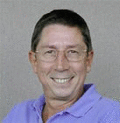
Geoff Thornton received his PhD in surface and solid state chemistry from the University of Oxford in 1976. He held an 1851 Research Fellowship at Oxford and UC Berkeley before taking up a lectureship in chemistry at Manchester University in 1979. He was Deputy Director of the IRC in Surface Science at Manchester and Liverpool Universities from 1988-1998. In 2003 he moved to University College London where he is a Professor of Physical Chemistry and a resident of the London Centre for Nanotechnology. He is an editorial board member of Surface Science and Surface Science Reports and chairs the Science Advisory Committee of the Diamond Light Source. His research interests involve linking the crystallography of metal oxide nanostructures with their electronic structure, reactivity, and functionality in a variety of applications. Nanostructures include defect structures, nanodots and supported metal arrays, created by scanning probe manipulation or self-assembly.
